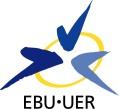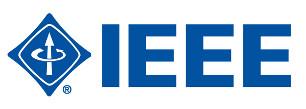
Speakers & Abstracts
- Pablo Angueira
- William T. Hayes
- Gabriel-Miro Muntean
- Lieven Vermaele
- Bo Rong
- David Wood
- Peter Moss
- Eisuke Nakasu
- John Cosmas
- Hugo Gauderis & Dominique Lievyns
- Philippe Bekaert & Peter Quax
Pablo Angueira
Challenges in Planning Mobile Broadcast Networks
Broadcasting digital television contents to a high number of mobile devices is seen today as one of the major advantages of terrestrial broadcasting. There are a few broadcast organizations that are preparing a new set of mobile and portable standards that will be commercially available in the close future. ATSC T/M, DVB-T2 Lite and the future DVB-NGH systems will be most likely deployed in Europe and North America respectively. In addition to new standards that include the state of the art coding, modulation, interleaving and frequency management techniques, there is a need for advanced network planning strategies. The talk will present different planning approaches in dense urban networks, evaluating the roll out costs associated to each deployment scenario. The planning methodology should include wideband simulation tools, that account for accurate signal distribution values, include SFN gains and MISO techniques. The talk will cover the implications of all these factors in the final deployment costs.
Bio
Pablo Angueira (IEEE Senior Member) received the M.S. and PhD in Telecommunication Engineering at the University of the Basque Country (Spain) in 1997 and 2002 respectively. Prof. Pablo Angueira joined the Dpt. of Electronics and Telecommunications of the University of the Basque Country in 1998. Within the TSR Research Group, he has been involved for 10 years in research projects to evaluate digital broadcasting systems in different frequency bands. His current research activities are related to DRM and new broadcast technologies (DVB-T2 and NGH). Pablo Angueira is co-author of a wide list of international peer reviewed journals, conference presentations related to digital terrestrial broadcast planning. He has supervised several PhD dissertations in this field. He has also co-authored contributions to the ITU-R working groups WP6 and WP3. Dr. Angueira is an Associate Editor of the IEEE Transactions on Broadcasting journal and Chairs the Strategic Planning Committee of the Broadcast Technology Society Administrative Committee. He is senior member of the IEEE and member of many international program committees.
Contact details
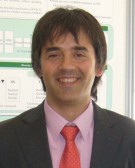 |
Dr. Pablo Angueira Associate Professor Dpt. Electronics and Telecommunications Bilbao Faculty of Engineering University of the Basque Country (UPV/EHU) pablo.angueira@ehu.es |
William T. Hayes
Future of (Terrestrial) Broadcast Television: North America
The value and roll of traditional terrestrial delivered television is under serious scrutiny in the North America and globally. At the same time, the universal connection of devices both wired and wireless present challenges and opportunities for terrestrial broadcasters. This presentation will look at the politics and pressures being brought to bear on broadcasters and some of the ideas and technologies being investigated, developed and deployed in both the professional broadcast and consumer products spaces. Whether it is in the communal viewing environment of the home living room, the individual viewing environment, or the mobile environment, the availability of both conventional broadcast content and internet delivered content offers some very intriguing possibilities. There are some very interesting twists and turns in how the predicted convergence of the broadcasting and the internet would manifest itself and what is actually happening.
Bio
William T. Hayes received a Bachelor's Degree in Communications in 1977. He has worked in broadcasting since 1973 in both radio and television. He has planned and constructed two start-up full power television stations. Mr. Hayes has extensive experience in planning, design and the construction of all facets of a television station. He is currently responsible for the planning and development of all technology projects at Iowa Public Television including RF transmission facilities, and studio origination facilities throughout the State of Iowa. In addition to his position at IPTV, Bill Hayes is also an author for TV Technology, a leading technical magazine. He is also the vice-president and junior past president of the IEEE Broadcast Technology Society. He is the recipient of the Society of Broadcasting Engineers Educator of the Year award for 2008. He is active in future broadcast planning on the national level and serves on a number of committees developing standards for emerging technologies such as hybrid television, mobile digital television and 3D television. Bill Hayes is a member of the Society of Motion Picture and Television Engineers, the Institute of Electrical and Electronics Engineers, the Society of Broadcast Engineers and the Society of Cable Television Engineers.
Contact details
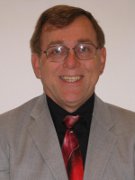 |
William T. Hayes Director of Engineering and Technology Iowa Public Television Vice- President of the IEEE Broadcast Technology Society hayes@iptv.org |
Gabriel-Miro Muntean
Using Adaptive Solutions in the Context of Multimedia Broadcasting
Multimedia streaming over wired and wireless networks has become a very popular activity for an increasing number of users. However high traffic load in wired networks, low bandwidth and increase number of users in wireless networks and limited mobile device power influence negatively the quality of the transmissions, affecting viewers’ perceived quality. This talk describes four adaptive solutions proposed to improve users’ perceived quality when delivering multimedia in various network conditions: Quality Oriented Adaptive Scheme (QOAS), Region-Of-Interest Adaptive Scheme (ROIAS), Priority-based Differentiated Quality of Service in wireless local area networks (PAM) and Battery power Adaptive Mechanism for wireless multimedia streaming to mobile devices (BAM).
Bio
Dr. Gabriel-Miro Muntean, Lecturer with the School of Electronic Engineering at Dublin City University (DCU), co-Director of the DCU Performance Engineering Laboratory and Director of the Network Innovations Centre, The Rince Research Institute, Ireland, has extensive research expertise in performance of adaptive video delivery, especially in terms of Quality of Service and Quality of Experience, performance of wired and wireless communications and energy-aware networking. Dr. Muntean has authored over 120 peer-reviewed papers in prestigious international conferences and journals, as well as a book and seven book chapters. He successfully supervised to graduation 5 PhD students and 5 Masters by research students. He was guest editor for 3 international journal special issues, including the Special Issue on IPTV published by the IEEE Transactions on Broadcasting. He was Technical Programme Chair for 3 international conferences and Technical Programme member for very prestigious conferences such as IEEE ICC, IEEE Globecom, IEEE LCN, IEEE MMNS, etc. He has acted as an expert reviewer for EPRC UK and Research Council of Norway funding agencies. Dr. Muntean is Associate Editor for the IEEE Transactions on Broadcasting. He was principal investigator for projects funded by Entreprise Ireland and Irish Research Council for Science Engineering and Technology as well as collaborator in projects funded by Samsung, Microsoft and Disney Research. He is a member of IEEE, IEEE Broadcast Technology and IEEE Vehicular Technology societies.
Contact details
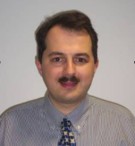 |
Dr. Gabriel-Miro Muntean Associate Editor, IEEE Transactions on Broadcasting co-Director, DCU Performance Engineering Laboratory Chairperson, DCU Masters in Engineering Programmes Lecturer, School of Electronic Engineering Director, Network Innovations Centre, The Rince Research Institute Dublin City University (DCU), Glasnevin, Dublin 9, Ireland +353 1 7007648 http://www.eeng.dcu.ie/~munteang munteang@eeng.dcu.ie |
Lieven Vermaele
Future of (Terrestrial) Broadcast Television: Europe
Broadcast and broadband technology continue to evolve and play an increasingly large part in shaping media organisation strategies and services. This session will provide an overview of some recent critical developments and to help in fully understand the ramifications as well as the opportunities available.
One of the main factors shaping what services media organisation provide is the capability of consumer electronics equipment, which is shaped by consumer demand. Today virtually all TV sets sold are HD-capable, a very large number are 3D-capable, and a growing number are hybrid/internet-connected. Hybrid broadcasting may open up many exciting new avenues for broadcasters, though the fragmentation of technical standards may hold back success. Many new types of consumer devices creates new opportunities to engage with the end users.
Broadband Internet will play an ever increasing part in media services, and media organisations must understand and master the technology options here, as well as for broadcasting. Equally vital for the broadcasters community is the need to retain adequate broadcast spectrum for the natural growth and continuation of services. This is under severe threat from the wireless broadband community. New dialogues need to be established to ensure the futures of both broadcasting and broadband. )
Bio
Lieven Vermaele has been Director of Technology and Development at the European Broadcasting Union (EBU) since 1 September 2007. Achievements include the introduction of new working methods and tools; spectrum policy (ITU, European commission); European-wide P2P projects; “Heads of Research”, a collaborative initiative between broadcasting research centres in Europe and outside (Japan, Canada); and the strengthening of industry-wide ties. He is Chairman of the ETSI/EBU/CENELEC Joint Technical Committee, which is responsible for setting European standards for broadcasting systems. EBU TECHNICAL's objective is to be ‘your reference in media technology and innovation’, which is reflected in the mission: connect and share, develop and guide, promote and represent, drive and harmonize.
Lieven Vermaele started his career at VRT where he worked for six years, mainly developing strategies for the implementation of new technologies. He was in charge of the renegotiation with the Flemish Government of VRT's management contract for 2006-2011. He later joined Alcatel-Lucent dealing with strategic issues before taking up his appointment at the EBU.
Lieven Vermaele was born in Ghent, Belgium in 1975. He is married and has a child.
Contact details
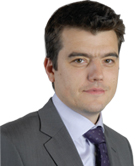 |
Lieven Vermaele Director Technology and Development, European Broadcasting Union (EBU), L'Ancienne-Route 17A CH-1218 Grand-Saconnex Geneva, Switzerland http://www.ebu.ch/en/about/management/Lieven_Vermaele.php http://tech.ebu.ch vermaele@ebu.ch |
Bo Rong
Error Correction Codes for Next Generation Spectrum Green Mobile DTV Systems
Current DTV system is often criticized for relatively poor spectrum efficiency because of the TV white space (TVWS) problem. This talk proposes a spectrum green DTV system, which solves the TVWS problem by eliminating co-channel interference and multipath distortion. As shown in our study, channel coding will play a critical role in the spectrum green DTV system. To address this issue, the talk will introduce a multi-layer iterative decoding scheme making use of the controllable deterministic bits, such as MPEG null packets, rather than the widely investigated protocol headers.
Bio
Bo Rong received the B.S. degree from Shandong University in 1993, the M.S. degree from Beijing University of Aeronautics and Astronautics in 1997, and the Ph.D. degree from Beijing University of Posts and Telecommunications in 2001. He is currently a Research Scientist with Communications Research Centre Canada, Ottawa, ON. He is also an Adjunct Professor at Ecole de technologie superieure (ETS), Universite du Quebec, Canada. Dr. Rong has authored or coauthored over 50 technical papers in major journals and conferences, as well as two book chapters in the areas of wireless communications. His current research interests include a variety of DTV transmission technologies, such as multicast-layer FEC, channel estimation and equalization, cognitive radio in TV white space. He served or is serving as symposium technical program committee membership of many major IEEE conferences, including BMSB, ICC, and GLOBECOM, etc. He is a Member of IEEE, Members of IEEE Broadcasting Society and IEEE Communication Society.
Contact details
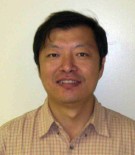 |
Bo Rong Research Scientist Television Networks and Transmission (RTNT) Broadcast Technologies Research, Communications Research Centre Canada 3701 Carling, Ottawa, Ontario, Canada. K2H 8S2 Tel: +1-613-991-4438 Email:bo.rong@crc.ca |
David Wood
3DTV and UHDTV: battle of the giants?
3DTV is currently set to follow an evolutionary path to higher quality, from today's frame compatible system, through systems which will give HDTV quality images for each eye, and on to 'multiview' systems which can be seen in displays without glasses. At the same time, standardisation of ultra high definition television systems, with 8Mpixel and 32Mpixel images, is proceeding even faster than 3DTV standardisation. Korea and Japan plan to start trials in 2017 and 2020. 2D Pictures with such detail take on the appearance of having more depth - with only one view and no glasses. Some broadcasters, such as NHK, believe that UHDTV will be more successful than 3DTV, and eventually eclipse it. One of the most exciting issues regarding the future of broadcasting is who will win this 'battle of the giant screens'. The presentation will offer one view.
Bio
David Wood was educated at Southampton University in the UK, the Popov Institute in the Ukraine, and the Harvard Business School. He has been a fanatic for 3D TV since the early 1980s, and made the first proposal to the SMPTE to study 3D TV in 2006. He chairs the activity on 3D TV in the ITU-R, and in the DVB Commercial Module, which may lead to a major step forward for 3D TV standards on 23 June 2010. He has been coordinating activities across standards activities with the SMPTE group, the ISO/IEC group, and the 3D@home consortium.
Contact details
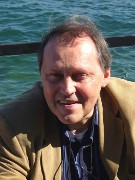 |
David Wood Deputy Director EBU Technical Chair ITU-R WP6C Chair DVB CM-3DTV Co-chair European HDTV Forum Co-Chair Arab States HDTV Forum European Broadcasting Union (EBU), L’ Ancienne-Route 17A CH-1218 Grand-Saconnex Geneva, Switzerland Email: wood@ebu.ch |
Peter Moss
New Technical Developments in DVB-T2 and DVB-NGH
The second-generation standards DVB-T2 and DVB-NGH introduce to broadcasting standards several new approaches and techniques not found in earlier, simpler standards such as DVB-T and DVB-H. This presentation gives an overview of these developments, including Physical Layer Pipes (PLPs), LDPC codes, rotated constellations and Peak-to-average Power Reduction (PAPR) from the T2 standard. From more recent NGH work, the introduction of MIMO is discussed, together with an account of the associated channel sounding and modelling exercise. The choice of MIMO codes and an approach to the problem of co-existence with SISO transmissions from the same tower will also be outlined, and a brief overview of MIMO for the satellite path will be described. Also from NGH, non-uniform QAM and Scalable Video Coding will be briefly considered.
Bio
Peter Moss joined the BBC in 1980 after gaining a BA in Physics from the University of Oxford. He is currently a lead research engineer at the BBC’s Research and Development department in West London. Initially involved in the design of transmitters and receivers for broadcast and ancillary services, he was responsible for the 175W PA design used in the first 27 DAB broadcast transmitters. He worked in the late 1990s on a wireless television camera based on the DVB-T standard where he was principal RF architect and circuit designer. More recently he has led the teams working on broadcast applications of MIMO and On-Channel Repeaters for DVB-T and DAB. In 2006 he chaired an industry consortium demonstrating the real-world capabilities of cross-polar broadcast MIMO. He is currently Task Force Chair for MIMO in the DVB-NGH group developing a next-generation transmission standard for handheld devices.
Contact details
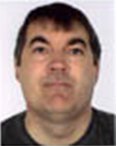 |
Peter Moss Lead R&D Engineer BBC Research & Development London, United Kingdom peter.moss@rd.bbc.co.uk |
Eisuke Nakasu
Future of (Terrestrial) Broadcast Television: Asia. Super Hi-Vision – A future TV system conveying an enhanced sense of reality and presence
NHK (Japan Broadcasting Corporation) has been developing an ultra high-definition TV system called Super Hi-Vision with the intention of making it a future broadcast system. Super Hi-Vision is an extremely high-resolution video system that features 33 megapixels along with 22.2 multichannel sound. The video system with 7,680 x 4,320 pixels (16 times the total number of pixels of an HDTV) provides an increased sense of reality and presence to viewers. The 22.2 multichannel sound system consists of three layers of loudspeakers and produces three dimensional spatial sound that augments more immersive impression. Basic parameters of the SHV system are designed based on the studies of human visual and auditory senses. This talk introduces Super Hi-Vision and shows the recent research and development on the future television system.
Bio
Dr. Eisuke Nakasu is currently an Executive Research Engineer of Advanced Television Systems Research Division in NHK Science and Technology Research Laboratories (STRL). He received his B.E. and M.E. degrees in Electric Engineering from Keio University in 1980 and 1982, respectively. He joined NHK (Japan Broadcasting Corporation) in 1982. Since 1985, he has been engaged in research and development on digital broadcasting systems, video coding and picture quality evaluation. Currently, he has been the chairman of the committee of research on quality assessment technique of ARIB (The Association of Radio Industries and Businesses) in Japan. He is a member of IEEE, IEICE and ITE of Japan.
Contact details
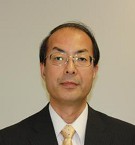 |
Dr. Eisuke Nakasu Executive Research Engineer Advanced Television Systems Research Division NHK Science and Technology Research Laboratories 1-10-11, Kinuta, Setagaya-ku, Tokyo 157-8510, Japan http://www.nhk.or.jp/strl/english/index.html nakasu.e-hm@nhk.or.jp |
John Cosmas
Future of Broadcasting and the Future Internet
As more and more homes are becoming connected to broadband Internet, it becomes increasingly more attractive for broadcast TV service providers to deliver broadcast TV services using the Internet, thereby releasing terrestrial radio spectrum to be used for what it is best suited to: mobile services. There are two factors that are constraining broadcast TV service providers from making this switch. The first is the percentage of homes that must be connected to Internet with broadband capacities must be sufficiently high to make it commercially viable and at some point this will inevitably be reached. The second is the quality, security and efficiency of the broadcast/multicast TV service provided through the Internet must at least be as good as that provided over the broadcast radio network. This talk presents our research into what innovations are being proposed for the Future Internet that may provide this and invites the workshop to discuss the likelihood that these changes will be realistically adopted by the Internet industry.
Bio
John Cosmas (M’86) received his B.Eng in Electronic Engineering at Liverpool University, UK in 1978 and a PhD in Image Processing at Imperial College, University of London, UK in 1986. He worked for five years in industry first with Tube Investments and then with Fairchild Camera and Instruments. After completing his PhD, he worked for 13 years as a lecturer in digital systems and telecommunications at Queen Mary College, University of London. Since 1999, he has worked for Brunel University, first as a reader and then in 2002 as a Professor of multimedia systems. His current research interests are multimedia broadcast communications systems, which evolved from his longstanding interests in video codecs (MPEG 4/7), and mobile communication systems (DECT/GSM/GPRS/UMTS). Prof. Cosmas currently serves as associate editor for IEEE Trans. Broadcasting. He also contributes to the Digital TV Group’s “Mobile Applications” sub-group and to the Digital Video Broadcast’s Technical Module: Converged Broadcast and Mobile Services (CBMS).
Contact details
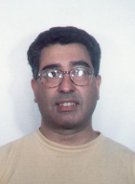 |
Prof. John Cosmas Professor of Multimedia Systems Associate Editor IEEE Transactions on Broadcasting Director Wireless Networks and Communications Centre, Director MSc in Advanced Multimedia Design and 3D Technologies School of Engineering & Design, Brunel University, Uxbridge, Middlesex. UB8 3PH United Kingdom Direct Tel: +44 (0)1895 266756 Tel: +44 (0) 1895 274000 ext 66756 Mobile: +44 (0) 7908151859 Fax: +44 (0) 1895 258728 http://people.brunel.ac.uk/~eestjpc/ email: john.cosmas@brunel.ac.uk |
Hugo Gauderis & Dominique Lievyns
Local Event Broadcasting
Norkring Belgium has developed a concept for Live DVB-T broadcasting at sports or cultural events. Local event broadcasting was demonstrated during the race season 2011 at the Circuit of Zolder. Norkring broadcasts the images captured during live races in DVB-T on the domain of the Circuit Zolder. This technological breakthrough allows spectators, drivers and teams not having to miss a second of the race. Pictures and race results are available live and in digital quality on all DVB-T receivers, from the smallest to the biggest screen. Never before have viewers been so immersed in a sporting event! In September Local Event Broadcasting was successfully demonstrated during the Diamond League Athletics - Memorial Van Damme in an arena with more than 50.000 spectators, showing that DVB-T is the best technology for broadcasting multiple channels and data at local events.
Bios
Hugo Gauderis graduated as Master in Electronics Engineering at the University of Leuven in 1992. For 15 years he worked in different functions for the transmission department the VRT - the public broadcaster in Flanders. From 2007 to 2009 he worked for VRT-Medialab the technological research department of the VRT. In 2009 he joined Norkring Belgium where he is now responsible for the technology.
Since the 1st of February 2010, Dominique Lievyns is active as Chief Sales & Marketing Officer (CSMO) for Norkring Belgium. His responsibility is sales and market development. Before joining Norkring, he grew into head of Global Media & Entertainment Solutions for digital fix & mobile TV for Nokia Siemens Networks.
Contact details
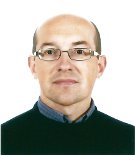 |
Hugo Gauderis Senior Technical Advisor Norkring Belgium http://www.norkring.be hugo.gauderis@norkring.be |
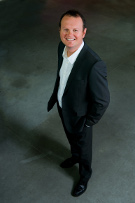 |
Dominique Lievyns Chief Sales & Marketing Officer Norkring Belgium http://www.norkring.be |
Philippe Bekaert & Peter Quax
Explorative Television
By explorative television, we mean novel television experiences on first or second screen, which are more close to "exploring a broadcasted environment" than to "watching broadcasted imagery". In te IBBT ICON R&D project with the same name ("xtv" in short), we investigate explorative television based on surround (panoramic or full omni-directional) video. Surround video is similar to google streetview, or quicktime VR, but for moving scenery rather than static. Exploration here means that the television spectator at home is able to "look around" at will into broadcasted imagery at will, on first screen (controlled through remote control and an appropriate set top box application that is transparently activated) or on second screen. Except for novel explorative television "formats", omni-directional and panoramic video also allows new opportunities in conventional television production. In this talk, we will present the context, opportunities and challenges of the concept and project, including the technological areas concerning capture, post-production, distribution and presentation and interaction. Explorative television experiments performed so far will be highlighted.
Bios
Philippe Bekaert is full professor in informatics-multimedia at Hasselt University, project leader at the Expertise center for Digital Media in Diepenbeek (Belgium) and principal researcher in the Future Internet department of IBBT (Institute for BroadBand Technology, in Ghent, Belgium). He obtained a MS in nuclear physics (1991), in computer science (1993), and a PhD in computer science (1999, promotor Yves D. Willems) at the Katholieke Universiteit Leuven, Leuven, Belgium. He has been affiliated with the Computer Graphics AG at the Max-Planck-Institute for Informatics in Saarbruecken, Germany (head: Prof. H.-P. Seidel), as a post-doctoral researcher supported with a EU Marie Curie fellowship in 2001-2002. His research interests include realistic image synthesis of 3D environments, image- and video-based modeling and rendering, omni-directional and free-viewpoint video, high performance computer graphics and Monte Carlo methods. He is leading 11 researchers in these areas at the EDM in Diepenbeek, and is co-author of over 100 scientific publications on all major fora in these fields including ACM SIGGRAPH and IEEE CVPR. He is co-author of a standard reference book in photorealistic rendering, published by A K Peters in 2003 and 2006. He is leading research in several large scale R&D projects in IBBT and EU context, such as the IBBT R&D project "explorative television" and EU FP7 projects "2020 3D Media", "FINE" and "SCENE". He is author of the omni-directional video and seamless multi-projection technology used by the art performance group CREW and strongly advocates joint creative and technological research. He is co-founder of the company "camargus" specializing in high-end multi-camera systems for sports broadcasting.
Peter Quax is a post-doc researcher at Hasselt University and a faculty member of the Expertise Center for Digital Media in Diepenbeek (Belgium). He obtained a MS in Computer Science from the Transnational University of Limburg in 2000 and a PhD in Computer Science in 2007 from Hasselt University. He has been involved in projects involving industry from early 2001, both in national and international context (EU, IBBT, IWT and bilateral cooperations). While originally focusing research on bandwidth issues in networked virtual environments, over time the interests broadened towards more generic classes of multimedia applications, but still focusing on the underlying network issues such as scalability and quality of service/experience. Currently he is a work package lead within the IBBT xTV project, the results of which will be presented in the talk.
Contact details
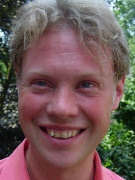 |
Philippe Bekaert Full Professor, project leader Expertisecentrum voor Digital Media Universiteit Hasselt Wetenschapspark, 2 3590 Diepenbeek - Belgie Tel: +32 11 268411 Fax: +32 11 268400 http://www.edm.uhasselt.be/ http://www.ibbt.be/ http://www.360video.org/ http://www.camargus.com/ http://www.crewonline.org/ http://www.advancedglobalillumination.com/ |
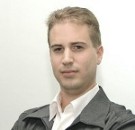 |
Peter Quax Expertise Center for Digital Media Hasselt University Wetenschapspark 2 3590 Diepenbeek Belgium T: +3211268411 F: +3211268499 E-mail : peter.quax@uhasselt.be |



